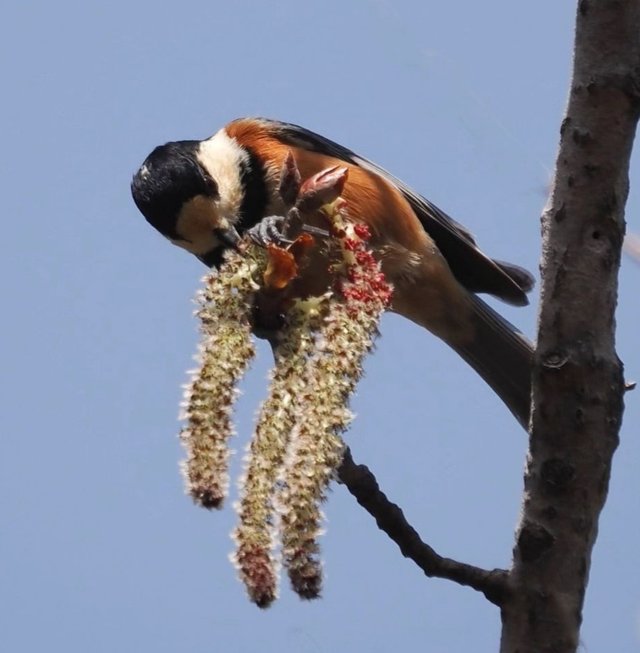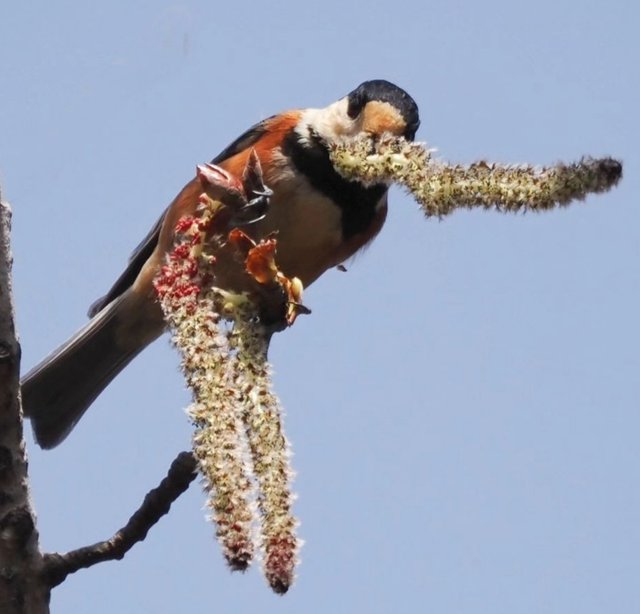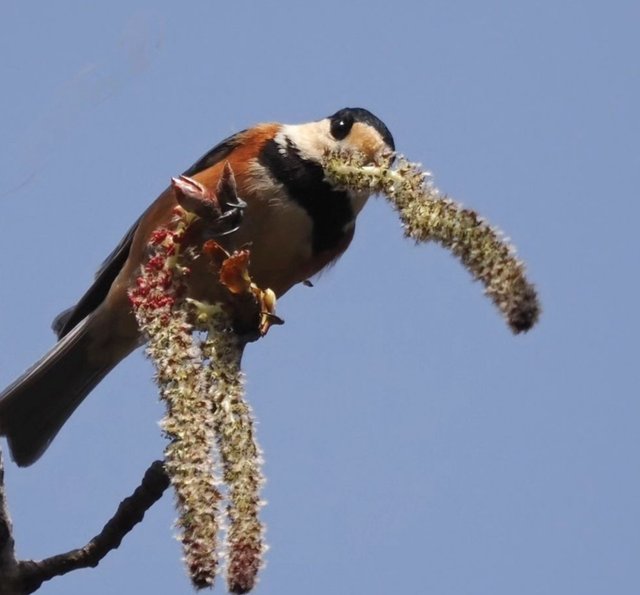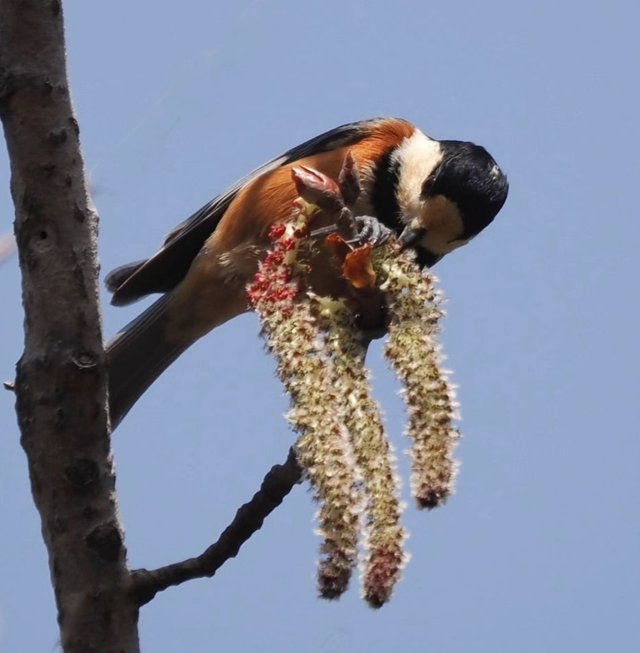Wonderful Bird Varied Tit
The Varied Tit, scientifically known as Sittiparus varius, is a small passerine bird found primarily in East Asia. It belongs to the family Paridae, which includes tits, chickadees, and titmice. This charming bird is renowned for its striking appearance, distinctive vocalizations, and lively behavior, making it a favorite among birdwatchers and enthusiasts.
Physical Characteristics:The Varied Tit is characterized by its compact size, measuring around 12-14 centimeters in length, with a wingspan of approximately 18-21 centimeters. It has a distinctive black head with white cheeks, a black bib extending down its throat, and a white belly. Its back is adorned with beautiful shades of olive green, while its wings and tail display a combination of black and white markings. The striking contrast between its dark head and bright body feathers makes it easily recognizable in its natural habitat.
Distribution and Habitat:This species is native to East Asia, with its range extending from eastern China, Korea, and Japan. It primarily inhabits forests, woodlands, and wooded areas, favoring mixed forests with a combination of deciduous and coniferous trees. Varied Tits are adaptable birds and can also be found in parks, gardens, and urban areas, especially during the winter months when they seek food and shelter in more accessible locations.
Behavior and Diet:Varied Tits are highly social birds that typically form small flocks, especially during the non-breeding season. They are active foragers, constantly flitting through branches and foliage in search of insects, spiders, seeds, and berries. Their diet varies seasonally, with a preference for insects and other arthropods during the breeding season, while seeds and fruits become more prominent in their diet during the colder months when insect prey is scarce.
Breeding and Reproduction:During the breeding season, which typically occurs from April to July, Varied Tits form monogamous pairs. They construct their nests in tree hollows, crevices, or abandoned woodpecker holes, often lining them with fur, feathers, and moss for insulation. The female lays a clutch of 5-7 eggs, which she incubates for about two weeks until they hatch. Both parents participate in feeding and caring for the chicks until they fledge, which usually occurs around three weeks after hatching.




Device Information
| Device | Redmi Note 10 Pro |
|---|---|
| Location | Bangladesh |
